SF Giants prospect rankings: Top 42 prospects

The SF Giants farm system will be back in action over the next few weeks, when the team's prospects report to the team's facilities in Scottsdale for spring training. With another minor-league season right around the corner, Giants Baseball Insider's prospect team will be sharing plenty of in-depth analysis of the team's system over the next week.
System overview
The Giants farm system seemed on the verge of a breakout in 2022, but injuries and poor performances early in the season seemed to take a disastrous turn. Nearly all of the team's top-10 prospects heading into the year (with a couple of exceptions) saw their stock plummet in the first half of the season.
However, things turned around in the second half, when several breakout prospects sustained hot starts and a few of those struggling closed the season on a hot streak. San Francisco's system was probably viewed more favorably at this point last year, but the gap is marginal. Moreover, the organization has some impressive depth, reflected by the number of players we placed at least a 40 future-value grade on. There is a lot of upside in this system right now, and players like Grant McCray, Aeverson Arteaga, Vaun Brown, Luis Matos, Eric Silva, Carson Whisenhunt, and Reggie Crawford are all a strong half season away from landing on top-100 prospect lists. If just a few of them hit, the Giants system will quickly be among the best in the league.
Also, for the uninitiated here is a list of the Giants affiliate in descending order:
Majors (San Francisco Giants/Major League Baseball)
Triple-A (Sacramento River Cats/Pacific Coast League)
Double-A Richmond Flying Squirrels/Eastern League)
High-A Eugene Emeralds/Northwest League)
Single-A (San Jose/California League)
Arizona Complex League
Dominican Summer League
Explaining our process
We have both been covering the Giants farm system for several years and ranked all the players that we both agreed were at least a 40-grade on the future-value scale. Each of us ranked certain prospects who are not included on this list because the other person was significantly lower on them as a prospect.
While we shared notes throughout the process, we compiled our lists independently and then had several conversations to try and come to a consensus on the final future-value grade and ranking for each player. To appear on this list, a prospect had to receive at least a 40 future-value grade from both of us. To see how our rankings differed, you can see our individual rankings at the bottom of this piece. You can also read about the best prospects who missed the list here.
Prospects are ranked based on their future-value grade on the scouting 20-80 scale. A system’s talent is never evenly distributed. Just because someone is ranked one spot away from another, the grades are better indicators of how we classify players than any specific ranking. Here’s a breakdown of what the expected peak of a player with each grade looks like.
80: Top 5 player in MLB (8+ WAR per season)
70: Top 10 player in MLB (5-8 WAR)
60: All-Star (3.5-5 WAR)
55: Above-average everyday player (2.5-3.5 WAR)
50: Everyday player (1.5-2.5 WAR)
45: Platoon player (0.5-1.5 WAR)
40: MLB backup (0.2-0.5 WAR)
35: Quad-A player (-0.2-0.2 WAR)
30: Triple-A player
25: Double-A player
20: High-A player
Two important notes:
1. The grades are current expected values, meaning you can think of those grades as the 50% outcome. These grades reflect our attempt to quantify their average potential outcome NOT their ceiling.
2. Some players will have grades with a plus sign next to them (40+, 45+, etc.). Probably 70-90% of top prospects in each organization fall somewhere from the 40-50 grades. It gets difficult to differentiate prospect No. 11 from No. 23. Some 40-grade players are closer to moving up to a 45-grade than others. Hence, the plus. A strong half-season from a 45+ player will almost definitely jump them up to a 50 grade. Same with a 40+ player going to 45, etc.
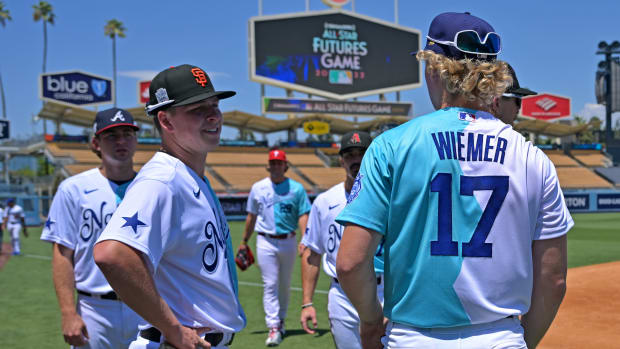
1A. Kyle Harrison, LHP
The SF Giants decision to sign Kyle Harrison away from his UCLA commitment for an above-slot $2.5 million signing bonus in 2020 remains one of the best decisions of the Farhan Zaidi era. Harrison easily has the best pitch arsenal in the farm system, and might be the best left-handed pitching prospect in the minors.
Harrison was dominant in seven starts at High-A (59 strikeouts in 29 innings pitched with a 1.55 ERA) before receiving a promotion to Double-A Richmond. While Harrison did not turn 21 until August, he was immediately one of the best starters in the Eastern League. Harrison recorded a 3.11 ERA with 127 strikeouts and 39 walks in 84 innings pitched (18 starts). Harrison held up impressively well throughout the season, eclipsing 100 innings for the first time in his career.
Harrison's fastball has reached the high-90s before, but mostly sat between 92-96 mph last season. Still, it has the characteristics to play like a plus (60-grade) pitch at that velocity. He also has a high-80s changeup with solid run and a nasty low-80s slider. His low release height helps his pitches play up but has also probably led to some of his inconsistency with command. If Harrison can develop above-average (55-grade) command, he absolutely has all of the pieces to become a bonafide ace. However, even if his command plateaus, he has three pitches with at least above-average potential, which should be enough to make him a viable starter.
FV Grade: 55
1B. Marco Luciano, SS
Marco Luciano is no longer the consensus top prospect in the SF Giants system after Harrison's exceptional 2022, but he remains the best-hitting prospect in the organization and a consensus top-50 prospect in the minors. Normally, the added risk that comes with pitching prospects would lead Luciano to the top spot, but questions about his defensive future and mild concerns about his injury history make the top spot a toss-up.
Luciano got off to a hot start at High-A, and probably was slated to be promoted with Harrison before a back injury sidelined him for most of June and July. While the rainy weather throughout the Pacific Northwest was suppressing offensive numbers in the Northwest League, Luciano hit eight homers in 40 games with a .288/.360/.507 triple-slash prior to the injury. However, he was unable to replicate that production upon his return. He was promoted to Double-A in time for the postseason but went just 1-for-8 with three strikeouts.
An advanced hitter for his age, Luciano is a rare prospect with plus-plus power potential and a hit tool that flashes plus as well (although it looked more on a 50/55-grade trajectory in 2022). Defensively, most scouts expect him to end up at third base or an outfield corner, although the Giants have let him develop at shortstop. While he has above-average potential anywhere on the diamond, Luciano's star potential increases dramatically if he can stick at short.
FV Grade: 55
3. Casey Schmitt, 3B
The SF Giants 2020 second-round pick, Casey Schmitt bounced back from an unimpressive first professional season with a breakout campaign. Schmitt was already an MLB ready defender at the hot corner, with Gold Glove potential. This past season, he began consistently tapping into his power potential for the first time in his career. While he probably projects as a league-average (50-grade) MLB hitter, his elite defensive ability gives him a chance to be a 55-grade player.
Schmitt started the year at High-A, hitting .273/.363/.475 with 14 doubles and 17 home runs in 93 games before he was promoted to Double-A. He also impressed a lot of scouts by sliding over to shortstop when Luciano was out with an injury and... actually looked viable. Then, Schmitt hit .342 at Double-A and was promoted to Triple-A for a short cup of coffee at the highest level of the minors, where he posted a .913 OPS. Schmitt's strikeout and walk rates both went in the wrong direction as he moved up the ranks, suggesting his numbers may have been a bit inflated by good luck. However, he'll only need to manage a .250/.320/.420 triple-slash to be an above-average third baseman.
FV Grade: 50
4. Luis Matos, CF
One of the biggest breakout prospects in 2021, Luis Matos struggled mightily at High-A last season. Matos always had an aggressive approach, but few expected it to cause him problems so early in his career. His .211/.275/.344 triple-slash was easily the worst line among qualified hitters in the Northwest League last season. Yet, with that said, he also posted the lowest strikeout rate among qualified players.
The SF Giants emphasized improved pitch selection with Matos heading into the season, but it seemed to cause him to overthink at the plate. He also dealt with a quad injury early in the season. He seemed to return to form over the summer, hitting .283/.312/.462 in 33 games with nine doubles, a triple, five homers, and seven stolen bases in August and September. However, he will need to become more selective at some point.
Matos improved defensively in center field last season, but he's more smooth than explosive as an athlete. His instincts should give him a chance to stick in center field, but he's likely a 50-grade defender in center or 55-grade defender in a corner. Matos looked like an explosive offensive force in 2021 and a soft-hitting future fifth outfielder at points last season. There is plenty of variance in Matos' possible outcomes. Roughly the age of a college junior (he turned 21 in late January), Matos will likely return to High-A this season and look to build off his late-season surge.
FV Grade: 45+
5. Grant McCray, CF
A third-round pick out of high school in the 2019 draft, Grant McCray thrived at Single-A in his first year of full-season ball. He hit .291/.383/.525 with 21 homers and 35 stolen bases with San Jose before a late-season promotion to High-A. McCray was incredibly productive but also struggled with strikeouts, recording a 29.2% strikeout-rate at Single-A and 35.5% strikeout-rate in a smaller sample at the next level.
McCray is a lanky athlete with plus-plus speed that he uses to cover a lot of ground in center field and on the basepaths. In the batter's box, McCray has a patient of approach that can help him take advantage of his explosive left-handed swing. Sometimes McCray looks like a refined veteran hitter, laying off close pitches and capitalizing on mistakes. Other times, he seems to abandon any plan, swinging aggressively. More than a year older than Matos, McCray has a comparably wide array of potential outcomes despite a very different profile for a solid defensive center fielder. McCray shares some similarities with former Giants outfielder Steven Duggar, although he's ahead of that trajectory offensively.
FV Grade: 45+
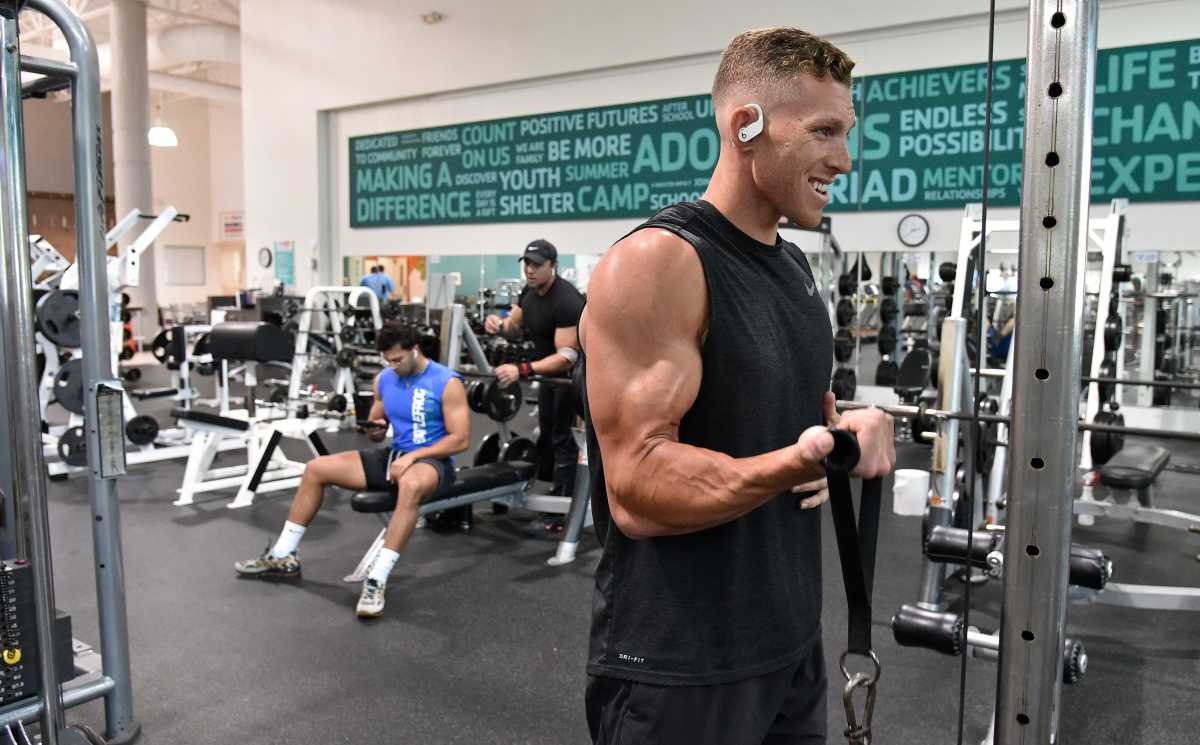
6. Vaun Brown, RF
Speaking of explosiveness, Vaun Brown had one of the best statistical seasons of any SF Giants minor leaguer this season. By June, Brown was the talk of any scout watching the Giants lower minor-league ranks. A senior-sign 10th-round pick in 2021, Brown had transformed from a speedy Division-II leadoff hitter into a legitimate prospect with plus or plus-plus potential power, speed, glove, and arm. He posted an OPS north of 1.000 at Single and High-A with 54 extra-base hits and 44 stolen bases.
There has never been a prospect like Brown, and that makes evaluating his upside exceedingly difficult. Brown has All-Star upside, but will turn 25 in June and lacks any track record against upper minors competition. Currently, Brown seems to have a good shot to at least end up in the Keon Broxton/Drew Stubbs tier of great-athletes with great power who are limited by contact issues. If it all comes together, though, has a profile comparable to former stars like Hunter Pence and Mike Cameron.
FV Grade: 45
7. Aeverson Arteaga, SS
Aeverson Arteaga is the cleanest defensive shortstop in the SF Giants farm system. Arteaga with the combination of range, athleticism, arm strength, and improving instincts but there is still room to improve on his glovework, particularly his internal clock. Offensively, Arteaga posted one of the more impressive power numbers, but it was clear that his approach needs plenty more polish, and his contact skills are a bit concerning. There is potential for him to be an everyday shortstop, but his fringy offensive production will likely limit his role to a backup.
Our split on Arteaga is one of the largest gaps toward the top of our rankings. Wrenzie is much lower on his current approach and power potential while Marc likes Arteaga's potential to generate pop with his wrists and is higher on his potential to develop 50-grade hit and power tools.
FV Grade: 45
8. Mason Black, RHP
Drafted in the third round out of Lehigh, Mason Black was the SF Giants most consistent pitching prospect from the team's 2021 draft class last season. Black started the year at Single-A, but was quickly promoted to High-A Eugene. He still racked up 92 strikeouts in 77.2 innings (16 starts) with 28 walks and a 3.94 ERA against the tougher competition.
Black is an east-west pitcher with a mid-90s fastball and mid-80s slider that both have flashed plus potential. Black has excellent control of his 6'3''-230lbs frame with some of the most consistent mechanics in the system. The righty has experimented with a changeup, but it's a long way from being a viable offering.
Black has the foundation of a potential mid-rotation arm, but still needs to find a third pitch or have his command take another step forward to be a surefire bet to stick. His velocity understandably dipped as the season went on, but it made some evaluators nervous that he will need to be pushed to the bullpen.
FV Grade: 40+
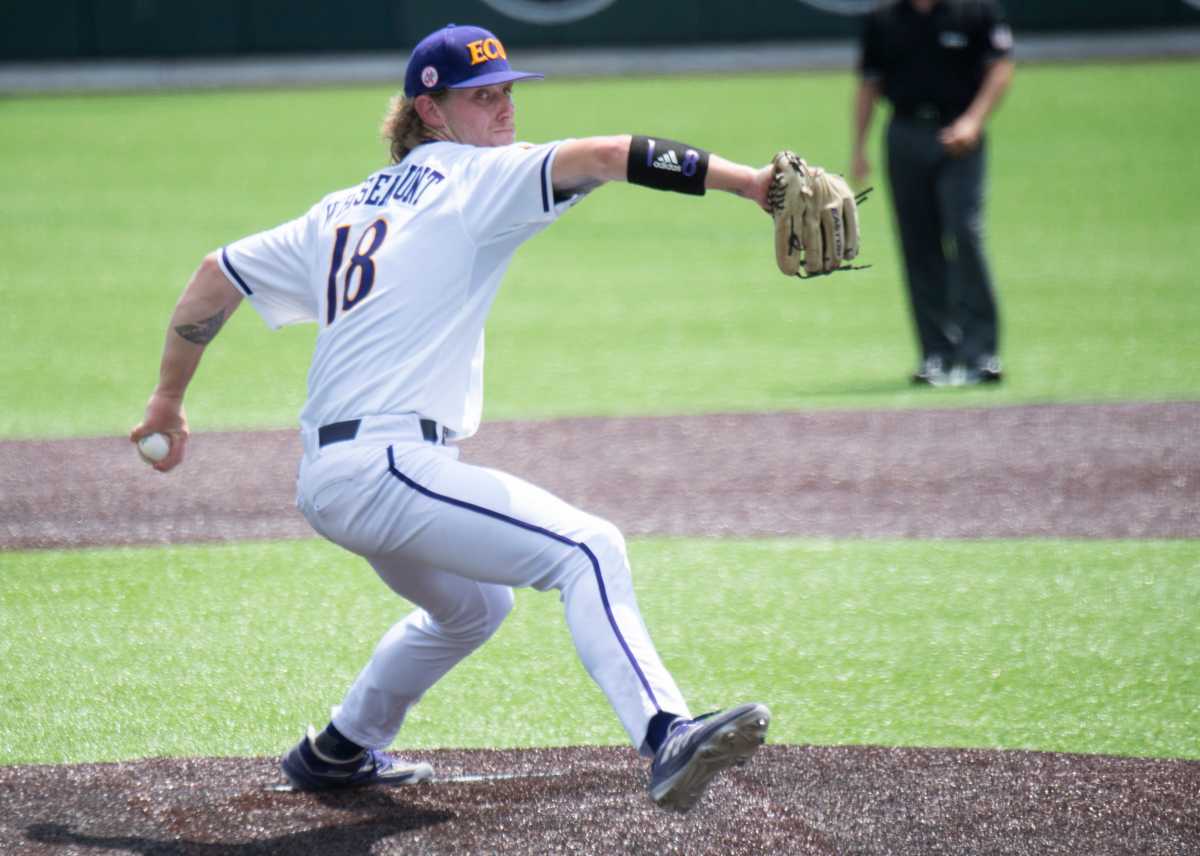
9. Carson Whisenhunt, LHP
The SF Giants second-round selection this summer, Carson Whisenhunt had the best changeup in the 2022 draft class, and likely would have been a mid first-round pick if not for a PED suspension. Whisenhunt was dominant during his brief pro debut, including at the Arizona Fall League.
His changeup is already a plus pitch and might have legitimate 80-grade potential. His fastball sits in the low-90s, although there's some hope that he could add velocity if he fills out his thin frame. At his best, Whisenhunt has flashed above-average command and even an intriguing 1-7 curveball. Even if Whisenhunt's fastball and curveball are just 45-grade pitches, his changeup could still make him a viable fourth starter. If his velocity jumps and/or his curveball finds its form, he could easily be a mid-rotation arm.
FV Grade: 40+
10. Landen Roupp, RHP
The SF Giants 12th-round pick in 2021 out of UNC Wilmington, Landen Roupp was another unexpected breakout prospect. He arguably has the best breaking ball in the system, a mid-70s offering with a very high spin rate, heavy drop, and plenty of sweep that he comfortably utilizes in any count. He pairs the pitch with a low-90s sinker that has heavy arm-side run that helped him induce a 1.43:1 groundout to flyout ratio. Roupp has played with several options searching for a third pitch, toying with a low-80s slider and a fringy changeup that have both showed some promise.
Ten years ago, Roupp would be knocked as a tweener who probably lacks the velocity to be a high-leverage reliever and the deep arsenal to be a mid-rotation arm, but as teams have valued 80-120 inning pitchers more, the value in a prospect like him has increased quite a bit. Given his sinker/breaking ball combination, he has a chance to one day find a role in a similar mold to Seth Lugo or (Giants era) Jakob Junis.
FV Grade: 40+
11. Eric Silva, RHP
Eric Silva was one of the more difficult prospects to rank in the organization. A top prep prospect who the Giants signed away from a UCLA comitment in 2021, Silva struggled in his full-season debut, posting a 5.88 ERA across 85.2 innings (22 starts) with promising strikeout (99) and walk (39) tallies. Given his youth (he turned 20 in October), though, scouts came away impressed with his upside.
Silva's fastball primarily worked in the low-to-mid 90s, but it has reached 97 mph. His slider is the most advanced of his secondary offerings, although his curveball is further along than his changeup. A great athlete, betting on Silva's potential as a starter he will find a plus offering in his development. For now, though, he projects as a back-end starter with several 45/50-grade offerings or as a setup arm.
FV Grade: 40+
12. Reggie Crawford, LHP/DH
You will not be able to find a more tantalizing and unproven prospect in professional baseball than Reggie Crawford. The Giants first-round pick in 2022, Crawford was drafted as a two-way player and signed away from a transfer commitment to Tennessee.
Crawford previously starred at UCONN as a power-hitting DH and high-octane reliever before looking like one of the best players at the Cape Cod League and with Team USA in the Summer of 2021. Crawford was beginning to enter conversations as a potential top-five pick in the draft when he tore his UCL in fall ball and was forced to undergo Tommy John surgery.
At his best, the southpaw has flashed the ability to reach 100 mph with his fastball while sitting in the mid-90s alongside a plus slider. At the plate, his left-handed swing can get long, and will likely struggle with off-speed pitches, but does tap into his plus power.
His offensive game is intriguing, but he's ultimately just a 35-grade (rounds 4-8) prospect as a hitter alone. This evaluation could change quickly if he proves he can make consistent contact against pro pitching, but for now, Crawford is a prospect because of his ability on the mound. While his upside is tantalizing, he's ultimately coming off UCL surgery with less than ten innings pitched in college. So what do the Giants have in Crawford? The Giants don't even know yet. But he could easily become the biggest steal of the 2022 draft if he reaches his full potential.
FV Grade: 40+
13. Carson Seymour, RHP
One of the four players the Giants acquired from the Mets in the Darin Ruf trade, Carson Seymour has the best pitch arsenal of the trio of pitching prospects San Francisco acquired in the deal. He has a wide variety of pitches, including a mid-90s four-seamer that has reached 98 mph, a 91-94 mph heavy sinker that takes advantage of the steep approach angle generated from his 6'6''-frame, a 88-91 mph slider that is easily his best pitch, a 12-6 curveball in the low-80s, and a mid-80s changeup with good fade.
Seymour can throw his pitches inside the strike zone, but is a quintessential example of a control-over-command pitching prospect. The fact is, his stuff is too good to post the 3.79 ERA he did at High-A. Most evaluators expect Seymour to shift to the bullpen, where he can parse down his arsenal and gain some velocity. However, he has the tools to possibly become a mid-rotation arm.
Marc is skeptical that his fastball plays well enough as a starter to prevent an eventual move to the bullpen, but Wrenzie believes that improved command will give him a chance to break out.
FV Grade: 40+
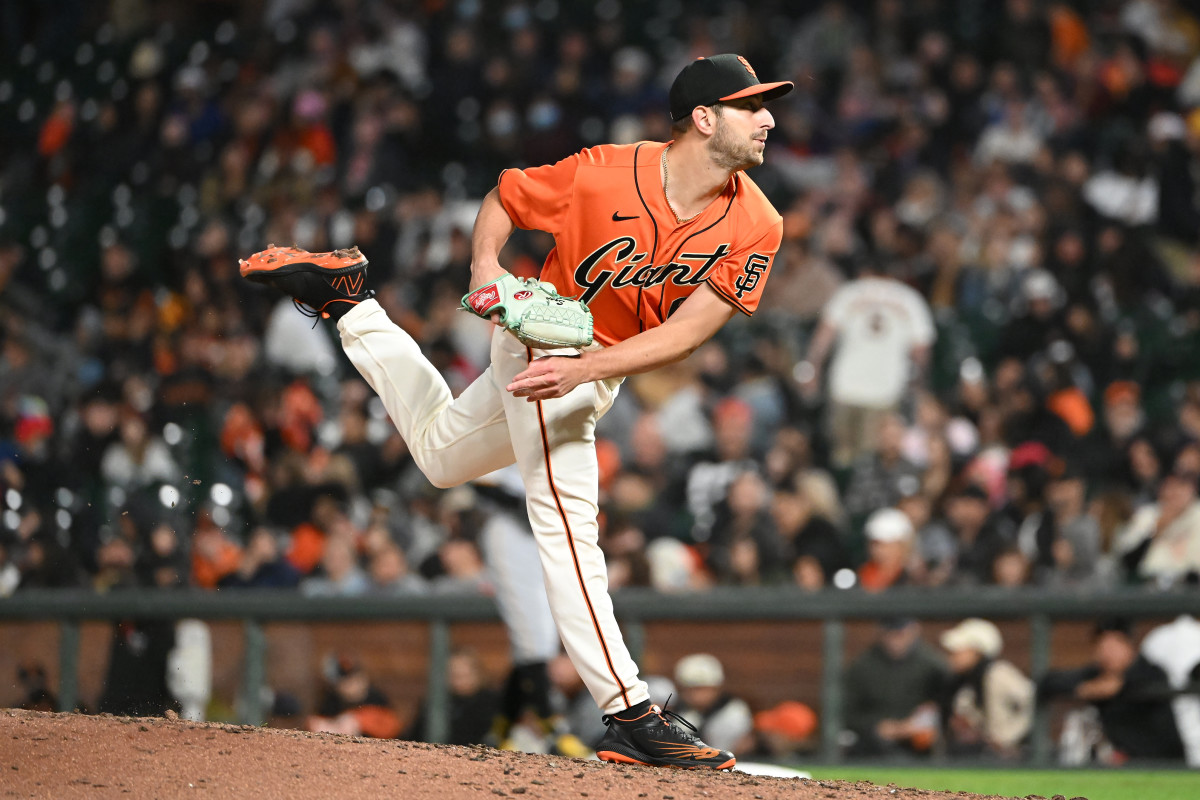
14. Thomas Szapucki, LHP
Another pitcher the Giants acquired in the Darin Ruf trade, the Mets drafted Szapucki in the fifth round of the 2015 draft out of high school. The lefty developed in the Mets' farm system as a starting pitcher, reaching the big leagues in 2021. Szapucki was an effective starter at Triple-A, but struggled in short stints.
The Giants converted Szapucki into a full-time reliever after the trade, and he immediately thrived. He recorded a 1.08 ERA with 15 strikeouts and three walks in 8.1 innings pitched with the Giants Triple-A affiliate before finishing the season in San Francisco's bullpen with a 1.98 ERA (16 strikeouts and four walks) in 13.2 innings. Szapucki became a two-pitch reliever, using a mid-90s fastball and low-80s curveball. He has also used a solid changeup in the past. His arsenal is reminiscent of former Giants reliever Jeremy Affeldt, and he could be a top setup option by the end of 2023.
FV Grade: 40+
15. Trevor McDonald, RHP
A pop-up prospect out of high school in 2019, the Giants signed Trevor McDonald for an $800,000 signing bonus. In his first full season outside the complex, McDonald recorded a 2.39 ERA at Single-A with 102 strikeouts in 90.1 innings pitched. He also starred in a pair of late-season appearances at High-A, allowing just two runs in 11 innings with 15 strikeouts.
McDonald has a pair of fastballs, a four-seamer that has reached 98 mph with a pretty flat approach angle up in the zone, but mostly sits between 92-95 mph, a pair of sliders, one in the high-80s with cutter-like movement and a slightly slower one with more depth, a mid-80s changeup that flashed good arm-side run, and a high-70s curveball. McDonald hides the ball well with a short arm action somewhat reminiscent of Craig Kimbrel, but scouts are concerned it will prevent him from handling a starter's workload.
McDonald's command has already taken notable steps forward since he was an amateur, and he's flashed at least four 50-grade pitches. With a strong-athletic frame McDonald has the tools to be a back-end starter, but will likely transition to a bullpen role.
FV Grade: 40+
16. R.J. Dabovich, RHP
R.J. Dabovich was the best relief-pitching prospect in the organization heading into 2022, with a potential 70-grade power curveball and 60-grade fastball. However, while his curveball remained a dominant offering, his fastball took notable steps back early in the season.
While Dabovich maintained mid-90s velocity, generally working from 94-96 mph, its characteristics that made it play like a triple-digit offering seemed to fade. Still, he recorded a 2.70 ERA with 38 strikeouts and just six walks in 26.2 innings at Double-A by leaning heavily on his breaking ball. After a promotion to Triple-A, however, Dabovich's lack of a second above-average offering was causing him problems.
Then, after making some adjustments, he regained the spin efficiency in his fastball. Over the final weeks of the season, Dabovich struck out 19 Triple-A hitters and walked just three across 13.1 innings pitched with a 3.38 ERA. He should be able to carry that success over into this season and is on track to make his big-league debut in 2023. He's currently in a race with Kyle Harrison to become the first player from the Giants 2020 draft class to reach the majors.
FV Grade: 40+
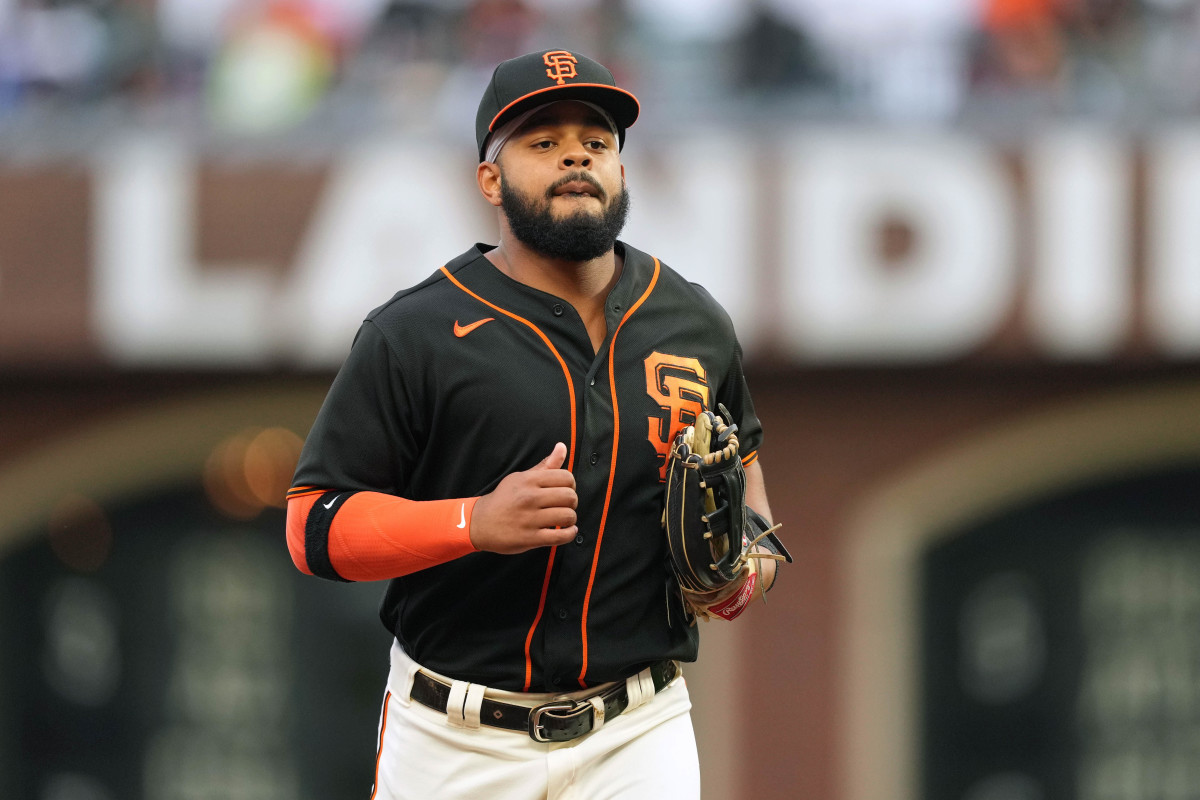
17. Heliot Ramos, OF
A former first-round pick, Heliot Ramos has plateaued since reaching the upper minors. Once flashing plus athleticism and power potential, Ramos' has developed into an average athlete who is unable to elevate the ball consistently enough to generate power.
Ramos had one of the best hard-hit rates in the organization last season (45.8%), but he hit just .227/.305/.349 at Triple-A because the vast majority of that hard contact went straight into the ground. To his credit, Ramos showed some improved pitch selection and posted some of the best strikeout (23.7%) and walk (8.7%) rates of his career.
Ramos has an above-average arm and has excellent defensive instincts in the outfield, giving him a chance to play all three outfield positions. However, his big-league potential is almost entirely tied to his ability to undergo a massive swing change to unlock his power. That's far easier said than done, but Ramos has moved quickly throughout his career. For context, he's more than a year younger than Vaun Brown and will not turn 24 until September. He's never shown significant platoon splits, which means he will either develop the pop to be an everyday player, or will be a soft-hitting AAA outfielder.
FV Grade: 40
18. Keaton Winn, RHP
Keaton Winn was the Giants fifth-round pick in 2018 and lost a lot of time between injuries and the pandemic. However, he unveiled an excellent splitter in 2022, that helped him get all the way to Double-A and earn a spot on San Francisco's 40-man roster.
His fastball routinely sits between 95-97 mph early in his outings before fading to 93-95 mph. If his secondaries develop enough, he could stick in the rotation, but his fastball velo gives him a high floor as a back-end reliever with a lethal fastball/splitter combo.
FV Grade: 40
19. Tristan Beck, RHP
Tristan Beck started this season with Double-A Richmond but was promoted to Triple-A Sacramento after just three outings. After joining the River Cats rotation, Beck had an underwhelming 5.64 ERA in 97.1 innings pitched (20 appearances). However, those numbers overshadow a much better performance over the last two months. and might have received a late-season callup if not for an injury.
When healthy he displays a starter's arsenal with a 92-96 mph fastball with average shape, a high-80s cutter, mid-80s slider, high-70s curveball with sharp 11-5 break, and a fringy mid-80s changeup. He can throw his pitches for strikes when he's on but in order for Beck to achieve more success. Beck has the ceiling of a back-end starter but with a high probability of settling as a reliever.
FV Grade: 40
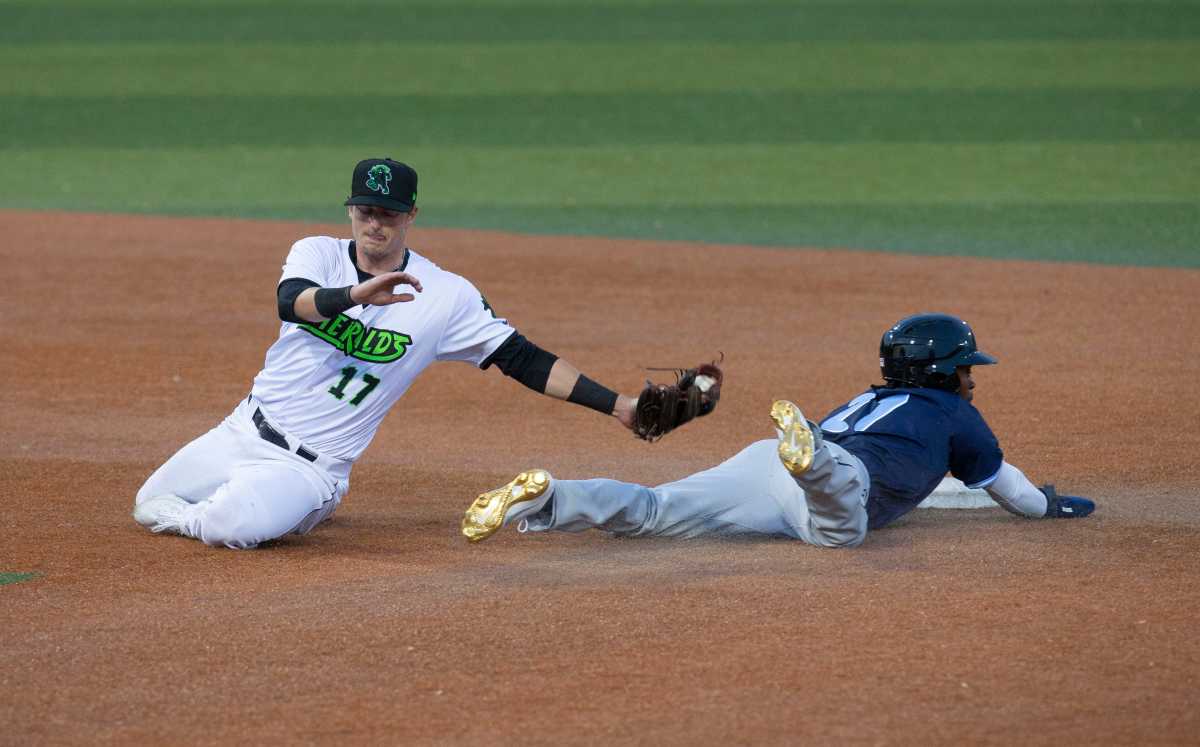
20. Tyler Fitzgerald, SS
In his first full season at Double-A, Tyler Fitzgerald hit .229/.310/.424 with 21 home runs and 20 stolen bases (21 attempts) with the Flying Squirrels. However, it was a tale of two seasons for the athletic shortstop, Fitzgerald had a .634 OPS at the end of June but posted an amazing .296/.355/.559 triple-slash to finish the season.
Despite his production, Fitzgerald has continued struggling to limit his strikeouts. Fitzgerald has struck out in 33.4% of his plate appearances this season while walking just under 7.5% of the time. While scouts are skeptical that Fitzgerald will ever make contact at even an average rate, his combination of power and athleticism still gives him a solid shot to reach the big leagues as a power-first utility infielder. Some scouts think he has the tools to be a solid defensive center fielder as well.
FV Grade: 40
21. Patrick Bailey, C
The SF Giants 2020 first-round pick, Patrick Bailey has struggled to live up to the expectations that come with being a top-15 pick. Bailey is a below-average athlete and probably needs to abandon switch-hitting. However, he still has the tools to be an above-average defensive catcher and is one of the best pitch framers in the entire minors. Offensively, he has a very good approach at the plate, and he hit .252/.370/.481 against righties with a 15.7% walk-rate and 19.7% strikeout-rate. Of course, his .460 OPS against southpaws suggest Bailey's future is as at strong side of a platoon behind the plate.
FV Grade: 40
22. Brett Wisely, 2B/SS/3B/LF
Acquired this offseason in a trade with the Rays, Brett Wisely has an advanced all-around game. In 2022, Wisely hit .274/.371/.461 with 15 home runs and 31 stolen bases in 112 games, primarily Double-A. Wisely received a late-season promotion to Triple-A, but posted a measly .238/.261/.333 line in 5 games.
Wisely lacks any standout tools, with his hit-tool the only one of particular note. With that said, Wisely does everything well and players with that skillset can often outperform expectations. Defensively, Wisely is best at second base.
FV Grade: 40
23. Ryan Murphy, RHP
Ryan Murphy was a breakout prospect in 2021, but he was hampered by back injuries in 2022 and looked like a shell of his previous self. His fastball sits in the low-90s and has reached to 95 mph with a combination of carry and arm-side run and a low-80s slider at the bottom of the zone when healthy, but were inconsistent last season. He also has an average-at-best changeup and curveball. A healthy 2023 could see Murphy creep back up the rankings as a potential back-end starter. But he'll need to regain his previous command.
FV Grade: 40
24. Jairo Pomares, OF
Jairo Pomares is a power-hitting corner bat who hit his first speed bump in pro baseball this past season. He crushed 20 home runs in 74 games in 2021 with exceptional exit velocities, and was a consensus top-10 prospect in the farm system. However, Pomares posted an unexceptional .254/.330/.438 line at High-A in 2022 with a concerningly high 32.9% strikeout rate. Limited to an outfield corner, and probably left field, Pomares will have to hit his way to the majors. He absolutely has the power to make an impact but will need to make more consistent contact.
FV Grade: 40
25. Randy Rodriguez, RHP
Randy Rodriguez flashed one of the best combinations of stuff and command in the SF Giants farm system in 2021. At his best, Rodriguez's fastball can sit in the high-90s alongside an elite mid-80s slider that consistently generates 3,000 RPMs. He also showed some impressive feel for a changeup. All that promise led the Giants to try shifting him to the rotation, but his fastball velocity crashed and his command wavered. However, Rodriguez looked far closer to his previous form after moving back to the pen. He's a two-pitch reliever who has the potential to be a back-end option.
FV Grade: 40
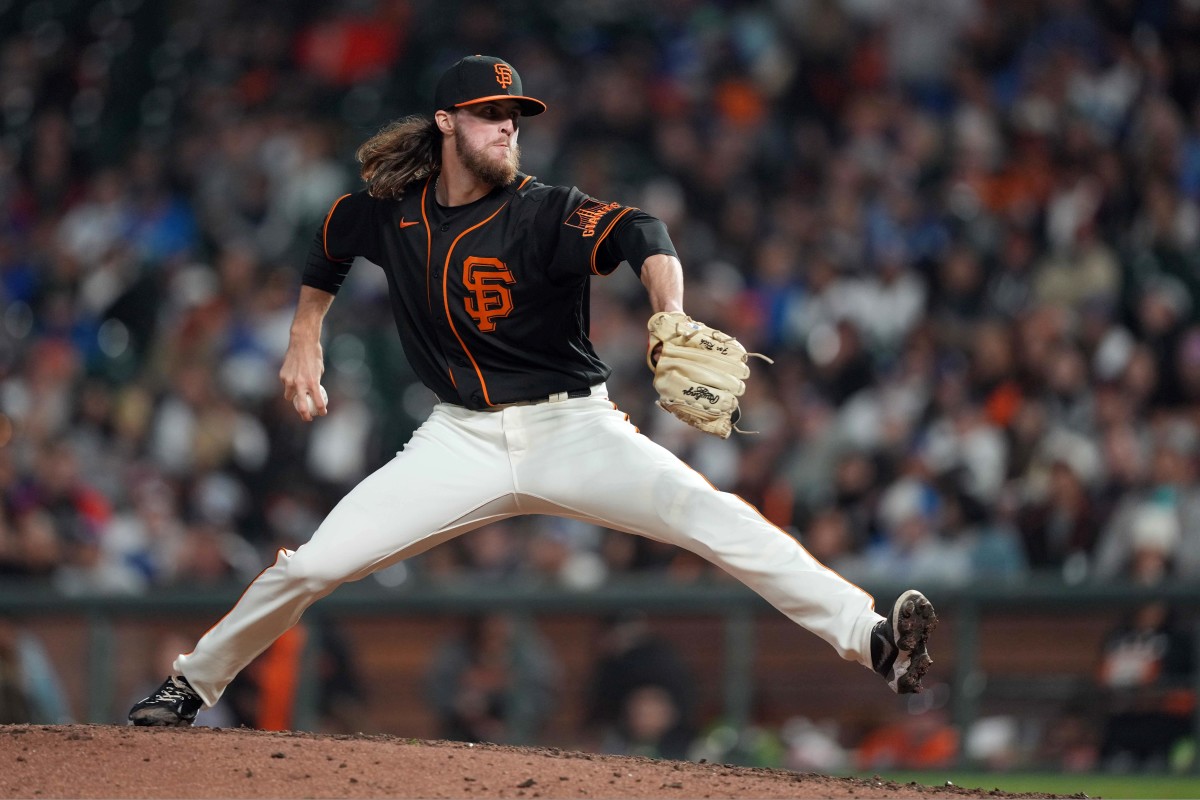
26. Cole Waites, RHP
Cole Waites became the first player drafted by the SF Giants since Farhan Zaidi became the team's president of baseball operations to play for the Giants last season. Waites was drafted in the 18th round of the 2019 draft out of West Alabama. He recorded a 3.18 ERA across seven big-league appearances.
Waites has an excellent pair of pitches in his arsenal, a mid-90s fastball and a high-80s slider. His fastball has good velocity but is even more challenging to hit because of its impressive spin rate and approach angle that make it harder for opposing hitters to pick up. Command has always been the biggest issue for Waites, and Marc is a bit more concerned about his ability to locate.
FV Grade: 40
27. Jose Cruz, RHP
Jose Cruz was voted the best reliever and best changeup in the California League this season. Cruz was exceptional at San Jose, pairing his changeup with a high-90s heater and a solid breaking ball. Inconsistent control was the only thing keeping him at Single-A. However, he was still the best reliever in the league. He racked up 77 strikeouts in 47 innings pitched (35 appearances) while surrendering 20 hits and 22 walks en route to a 2.30 ERA.
FV Grade: 40
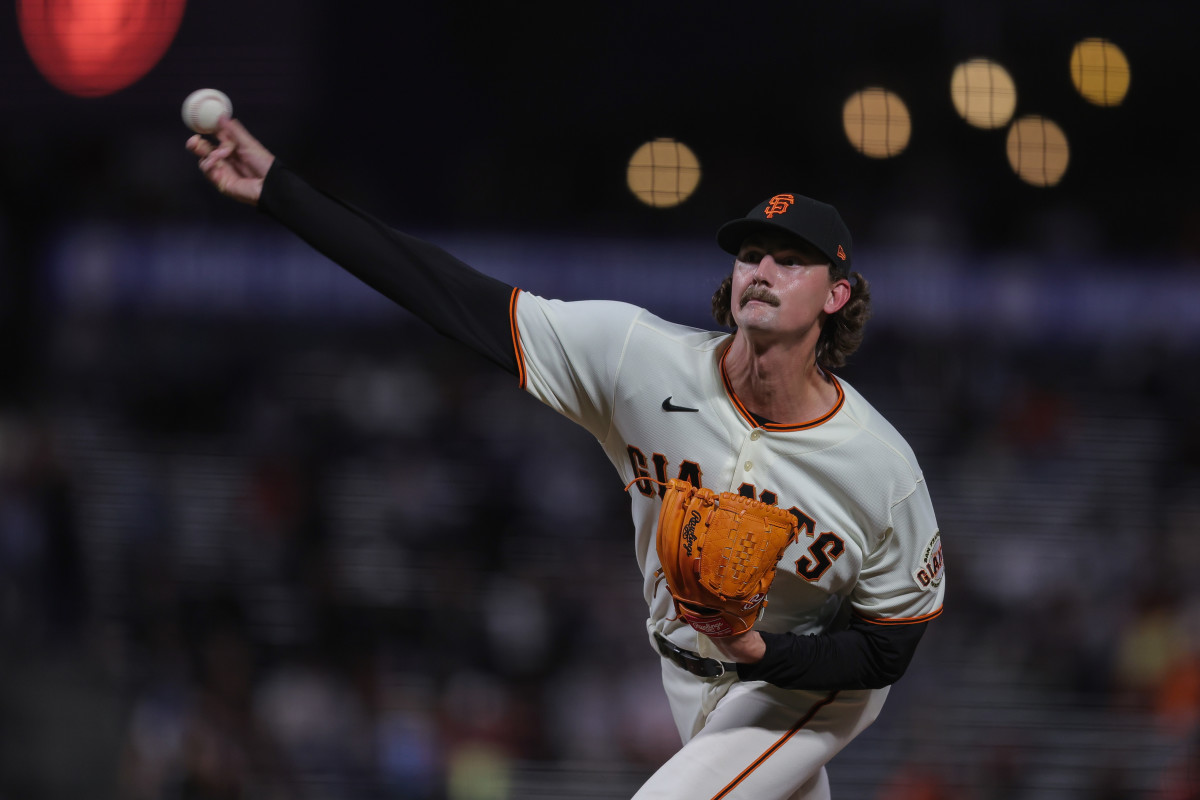
28. Sean Hjelle, RHP
Sean Hjelle looked impressive in September with the Giants, recording at least four innings pitched without allowing more than two runs in three of his four outings. With that said, he still had a 5.76 ERA in 25 MLB innings this season. In the minors this year, Hjelle had a 4.92 ERA in 97 innings pitched (22 starts) at Triple-A with 80 strikeouts and 38 walks.
FV Grade: 40
29. William Kempner, RHP
William Kempner, a San Jose native, was the Giants third-round pick this summer. He is a stocky 6’0’’ righty with a big arm and a funky sidearm delivery. His fastball has reached 100 mph and sat in the mid-90s deep into his starts at Gonzaga with a slider that is his best swing-and-miss pitch. He has played with a changeup as well.
Kempner missed some time in college with a ligament injury in his finger and his unorthodox mechanics raise concerns about his ability to locate his pitches and handle a starter's workload. For that reason, Kempner is probably a future reliever.
FV Grade: 40
30. Nick Zwack, LHP
Another prospect acquired from the Mets in the Darin Ruf trade, Nick Zwack works best when he's pounding the inside third of a right-handed batter with his glove-side breaking pitches, mainly his low-90s cutter and mid-80s slider that both flash above average. His fastball can run up to 94 mph but has two-seam action that he can work up in the zone. His changeup is fringy at best and is a clear fourth pitch. His control waned when he got traded to the Giants but managed to get more strikeouts. If he can regain his control when he was a Met, there is back-end starter potential, although he probably falls into a swingman/middle reliever role.
FV Grade: 40
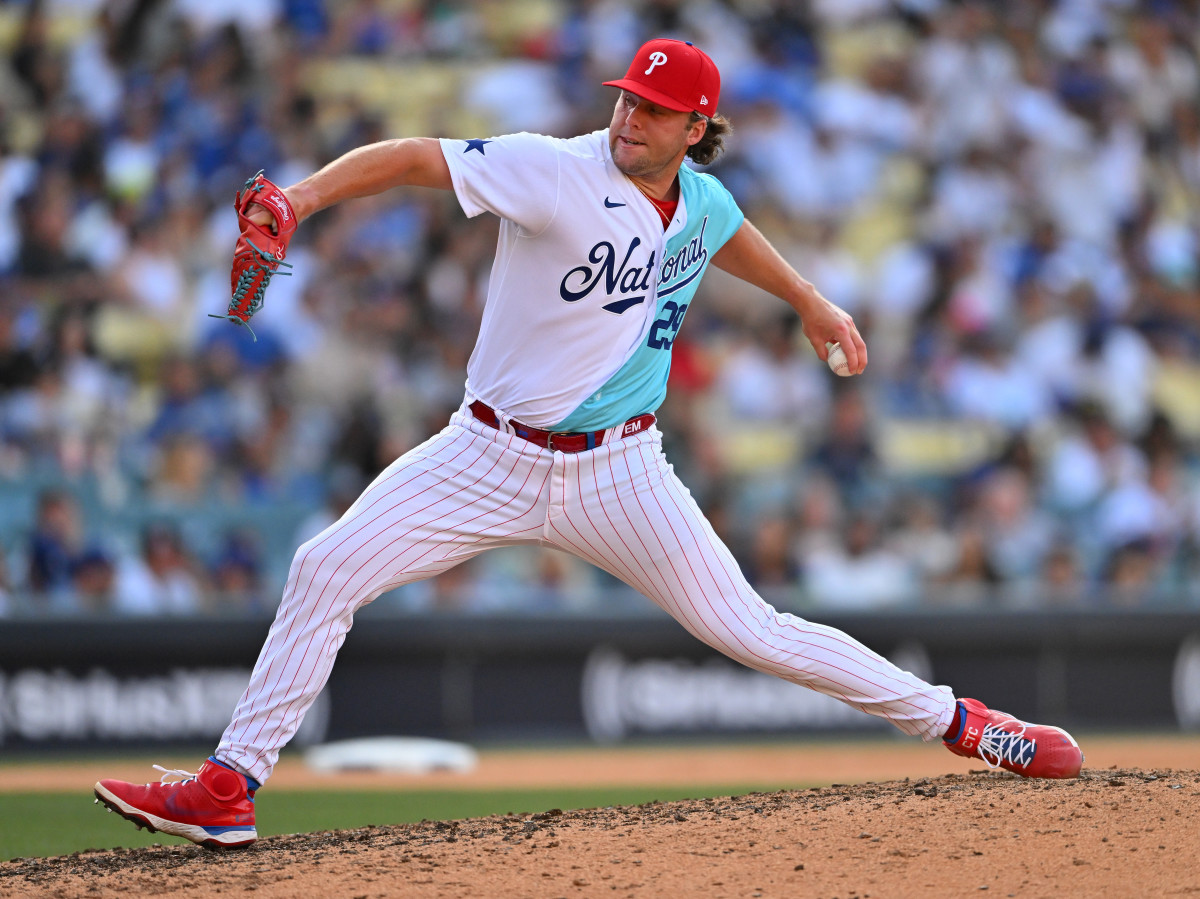
31. Erik Miller, LHP
Acquired in a trade from the Phillies this offseason, Erik Miller is a sturdy southpaw with a 6'5''-240lbs frame. The Phillies moved him to a long-reliever role in 2022, although it's unclear if that was a permanent change or simply a way to limit his innings after missing most of the 2021 campaign with an injury. His fastball sits in the mid-90s and pairs well with a high-80s slider and a mid-80s changeup, which is easily his most devastating pitch.
In 2022, Miller racked up 44 strikeouts and 17 walks in 36.1 innings pitched (22 appearances) at Double-A with a 2.23 ERA before he was promoted to Triple-A. However, his struggles with control immediately became apparent. At the highest level of the minors, Miller walked 14 in just 12 innings pitched (18 strikeouts) and finished the season with a 7.50 ERA. Given his struggles with command, it seems likely that he will remain in the pen going forward.
FV Grade: 40
32. Victor Bericoto, 1B/OF
Victor Bericoto emerged as one of the better hitters in San Jose last year and has the potential to truly break out in 2023. He has a balanced offensive profile with good contact ability and approach while posting a max exit velocity north of 120 mph. He will need to elevate more consistently to maximize his power potential. Most believe Bericoto is limited to first base (although Marc thinks he has viability in the outfield), Bericoto is going to have to hit a lot to carve out a big-league role. He'll look to do exactly that as a 21-year-old at High-A this season.
FV Grade: 40
33. Blake Sabol, C/OF
The SF Giants acquired Blake Sabol in a trade with the Reds shortly after he was drafted away from the Pirates in the Rule 5 Draft. Sabol hit .284/.363/.497 between Double-A and Triple-A last season, posting a .969 OPS at the highest level of the minors.
A left-handed hitter, the Giants likely hope Sabol could become a viable platoon partner for current catcher Joey Bart, who has struggled against right-handed pitching. Sabol will have to improve immensely defensively to receive that much playing time, though. Sabol recorded 11 passed balls in 66 games at catcher in 2022 and only threw out 14% of opposing base stealers. Both numbers are well below MLB averages. He is a viable defensive outfielder but is far from a standout there.
FV Grade: 40
34. Adrian Sugastey, C
Adrian Sugastey hit just .240/.329/.333 at Single-A last season, in his first taste of full-season action. However, he was one of the youngest position players in the league, not turning 20 until October. Moreover, Sugastey has an advanced ability defensively and has all the skills to stick behind the plate. Sugastey's frame is already maxed out and his bat speed is far from exceptional, however, he has some strength that should be able to play more as he matures. It's worth noting that he has room to be a bit more homer-happy at the plate after striking out in just 15.6% of his plate appearances last season.
FV Grade: 40
35. P.J. Hilson, CF
P.J. Hilson was easily the star of the SF Giants complex league affiliates last summer. Hilson might be the fastest player in the organization with one of the strongest arms, but drafted out of high school back in 2018, it has taken a long time for his bat to adjust to professional pitching. After striking out in roughly 40% of his plate appearances from 2018-2021 in Arizona, Hilson hit .313/.399/.591 with 16 doubles, six triples, nine home runs, and 13 stolen bases in 56 games at the ACL. Hilson was promoted to San Jose late in the season, and he held his own, hitting .313/.340/.458 with a reasonable 15.1% strikeout rate. Hilson is slightly on the older side for his level, turning 22 last August, but he still has enticing tools and could be a breakout prospect to watch next season.
FV Grade: 40
36. Carter Aldrete, 1B/2B/3B
A 15th-round pick out of Arizona State in the 2019 draft, Carter Aldrete was one of the better-performing hitting prospects in the farm system last year. The son and nephew of former pro ballplayers (Rich and Mike Aldrete), Aldrete has plus power potential that he began tapping into more consistently in 2022. Starting the season at High-A Eugene, he hit 17 doubles and 15 home runs in 74 games with a .915 OPS before he was promoted to Double-A. Unsurprisingly, though, Aldrete's numbers regressed at Richmond. He has surprising athleticism for a guy his size, flashing viability at second and third base before taking to first base well. He's played some shortstop, but that's probably not in the cards for his future. Given his versatility and power, Aldrete has a good chance to be at least a big-league bench bat.
FV Grade: 40
37. Spencer Miles, RHP
If Spencer Miles had managed just solid numbers in college, he probably would have been a Day 1 selection. However, Miles had a career 6.27 ERA at Missouri and fell to the Giants at the end of the fourth round. Miles was primarily a position player in high school, and that athleticism shows up on the mound with a smooth delivery that should be easy to repeat.
Despite his struggles, Miles has never been derailed by walks, posting a reasonable 7.1% career walk rate during his time at Mizzou. His fastball sits in the mid-90s and has reached 97, with a slider, changeup, and curveball that have flashed at least 50-grade potential, giving him the tools to be a mid-rotation arm if it all comes together. But he needs to show he can do that first.
FV Grade: 40
38. Liam Simon, RHP
Liam Simon has an electric right arm capable of firing fastballs up to triple-digits with solid carry and running action. His mid-80s slider flashed plus with good depth and some sweep though his high-80s changeup with plenty of running action can be his best secondary pitch at times. Simon has an athletic, repeatable delivery and has the arsenal to stick in the rotation, but his extremely wild command (he walked 57 hitters in 62.1 college innings) has scouts skeptical he will not have to move to the pen.
FV Grade: 40
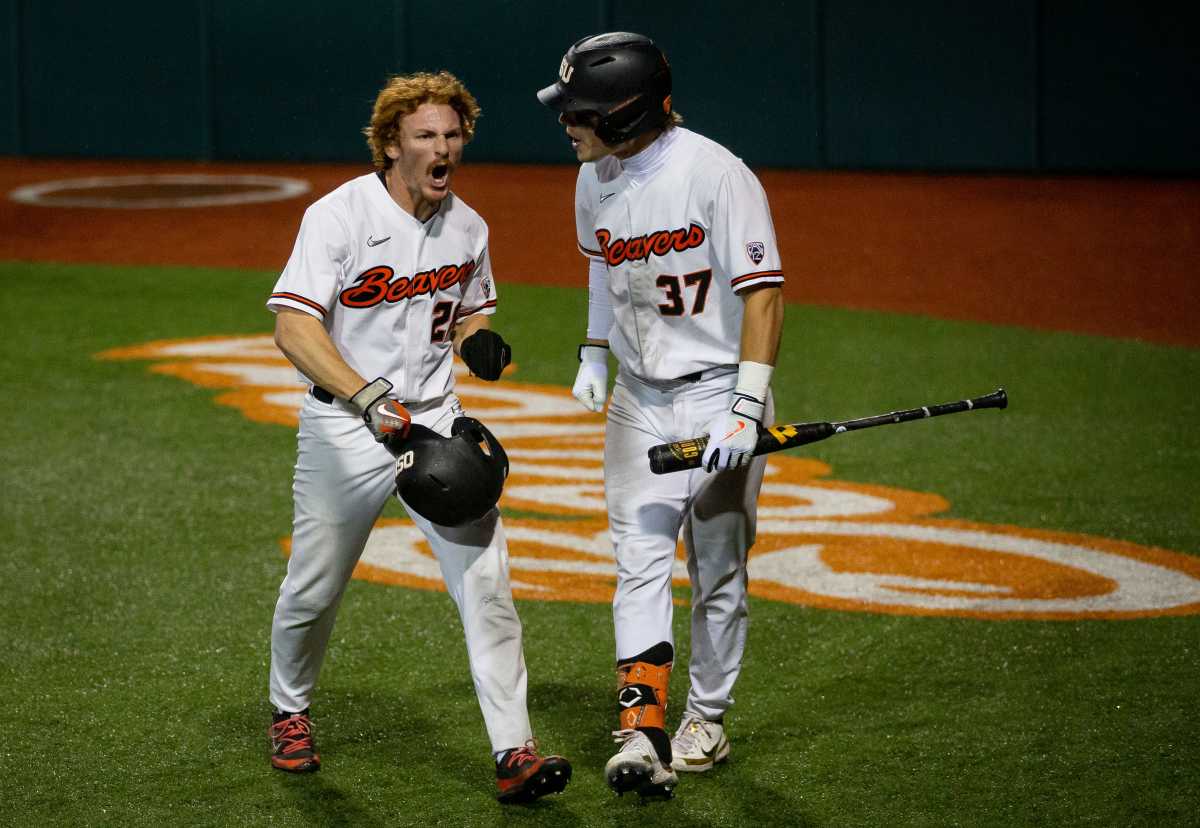
39. Wade Meckler, OF
Wade Meckler was one of the best stories from the SF Giants 2022 draft class, bouncing back from being cut by Oregon State to become one of the top senior-sign prospects in the class. Meckler separates himself from the rest of the farm system's hitting prospects with his exceptional strike zone control due to a combination of high in-zone contact rate and low chase rates. He uses his above-average speed and excellent instincts to maximize his athleticism, giving him a chance to be a base-stealing threat, an above-average defender in both corners, and a viable centerfielder. What greatly holds Meckler's potential back is his lack of power. Meckler's exit velocity data is in the Nick Madrigal range and will force him to get the most out of his other tools to remain a prospect. However, given how refined the rest of his game is, he has a decent shot at becoming a fourth outfielder.
FV Grade: 40
40. Nick Swiney, LHP
Nick Swiney battled inconsistency last season at High-A Eugene, recording a 3.84 ERA in 89 innings (21 appearances). Most concerningly, the 2020 compensatory second-round pick did not seem to take any notable steps forward. His fastball mostly sits in the 87-89 mph range, occasionally crossing the 90 mph threshold. His mid-70s changeup is still his best pitch, flashing plus-plus potential, but his command remains too underdeveloped to maximize its potential. He also has a and low-70s curveball that has a chance to be an above-average big-league offering. With the lack of velocity jump, Swiney is still best suited as a junkballer reliever where his game revolves around his off-speed pitches.
FV Grade: 40
41. Alexander Suarez, OF
Alexander Suarez is an athletic young outfielder who was among a group of prospects hurt by the removal of short-season ball. Forced to full-season ball in 2022 after posting an .881 OPS at the complex the year prior, Suarez struggled to a mediocre .231/.296/.412 triple-slash at Single-A. Suarez has plus power potential in his 6'2''-200lbs frame, but he will probably have to shift to an outfielder corner defensively. Suarez has an aggressive approach and will need to be more selective as he develops, but he did look more and more comfortable at the plate as the season went on. He turned 21 in December and could easily repeat the year at Single-A.
FV Grade: 40
42. Seth Lonsway, LHP
A sixth-round pick in 2021, Seth Lonsway enjoyed a pleasantly surprising first full-season season by showing improved control of his arsenal. Lonsway was held back by inconsistent command throughout his college career at Ohio State, but took some steps forward as a swingman. In 95.1 innings at Single-A, Lonsway racked up 120 strikeouts (although he walked 51) and posted a 4.06 ERA. He has a low-90s sinker with great depth and run alongside his signature high-70s curveball, which will dominate hitters in the lower minors. He also has a high-80s cutter with solid action and a changeup. Lonsway's curveball should carry him to the upper minors, but his command will need to continue improving for him to reach the majors.
FV Grade: 40
Marc's rankings:
1. Marco Luciano (55)
2. Kyle Harrison
3. Luis Matos (50)
4. Casey Schmitt
5. Aeverson Arteaga (45+)
6. Grant McCray
7. Vaun Brown (45)
8. Carson Whisenhunt
9. Reggie Crawford (40+)
10. Eric Silva
11. Landen Roupp
12. Heliot Ramos
13. Mason Black
14. Thomas Szapucki
15. Keaton Winn
16. Brett Wisely
17. Randy Rodriguez
18. Jairo Pomares
19. Tyler Fitzgerald
20. Trevor McDonald
21. Tristan Beck
22. Blake Sabol
23. R.J. Dabovich
24. Will Wilson (40)
25. Patrick Bailey
26. Carson Seymour
27. Nick Zwack
28. Jose Cruz
29. Ismael Munguia
30. P.J. Hilson
31. Adrian Sugastey
32. Sean Hjelle
33. Erik Miller
34. Carter Aldrete
35. Alexander Suarez
36. William Kempner
37. Spencer Miles
38. Onil Perez
39. Victor Bericoto
40. Nick Swiney
41. Liam Simon
42. Ryan Murphy
43. Cole Waites
44. Mikell Manzano
45. Luis Toribio
46. Joey Marciano
47. Brett Auerbach
48. Wade Meckler
49. Seth Lonsway
Wrenzie's rankings:
1. Kyle Harrison (55)
2. Marco Luciano
3. Casey Schmitt (50)
4. Grant McCray (45+)
5. Vaun Brown
6. Luis Matos (45)
7. Mason Black (40+)
8. Landen Roupp
9. Aeverson Arteaga
10. Carson Seymour
11. Eric Silva
12. Carson Whisenhunt
13. Trevor McDonald
14. Ryan Murphy
15. Thomas Szapucki
16. Reggie Crawford
17. R.J. Dabovich
18. Cole Waites
19. Heliot Ramos (40)
20. Tristan Beck
21. Tyler Fitzgerald
22. Patrick Bailey
23. Brett Wisely
24. Keaton Winn
25. William Kempner
26. Victor Bericoto
27. Sean Hjelle
28. Jose Cruz
29. Ryan Reckley
30. Erik Miller
31. Nick Zwack
32. Jairo Pomares
33. Adrian Sugastey
34. Wade Meckler
35. Liam Simon
36. Blake Sabol
37. Carter Aldrete
38. Evan Gates
39. Randy Rodriguez
40. Ryan Walker
41. Seth Lonsway
42. Nick Swiney
43. Carson Ragsdale
44. Spencer Miles
45. Will Bednar
46. Javier Francisco
47. P.J. Hilson
48. Alexander Suarez
